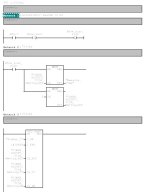mulderm
Member
Hello,
First of all best wishes to everyone on this great forum.
I start this new year with a question.
I like using a timer to measure the time between pulse patterns and the measurement time of writing to a marker word (measurement time in ms).
Thus, writing the measurement time between each two pulses.
I know about that the time between the pulses ranges from between 1 and 4 seconds.
I would prefer to use the standard Siemens timers (eg ODT timers).
Is this possible?
Grt mulderm
First of all best wishes to everyone on this great forum.
I start this new year with a question.
I like using a timer to measure the time between pulse patterns and the measurement time of writing to a marker word (measurement time in ms).
Thus, writing the measurement time between each two pulses.
I know about that the time between the pulses ranges from between 1 and 4 seconds.
I would prefer to use the standard Siemens timers (eg ODT timers).
Is this possible?
Grt mulderm








